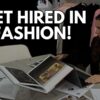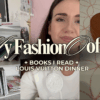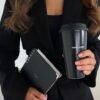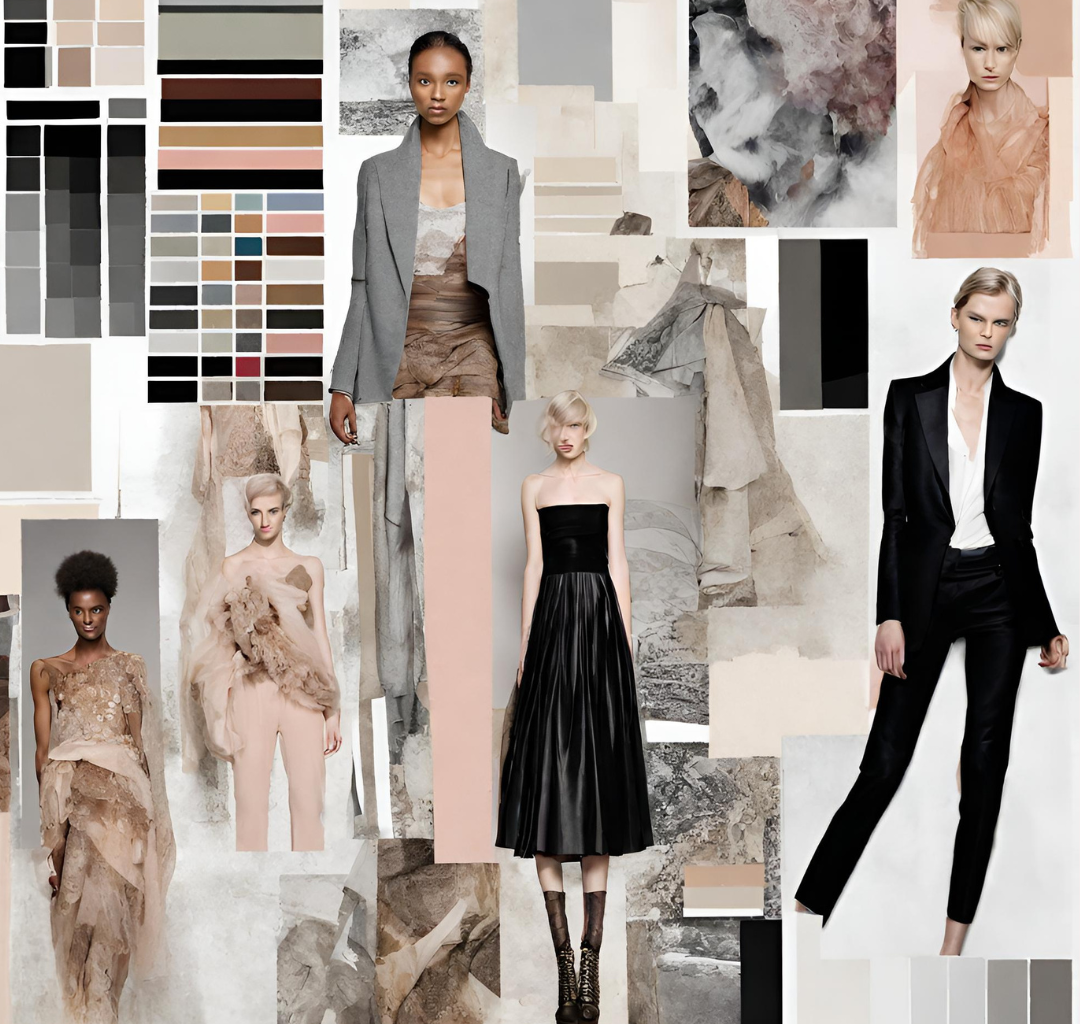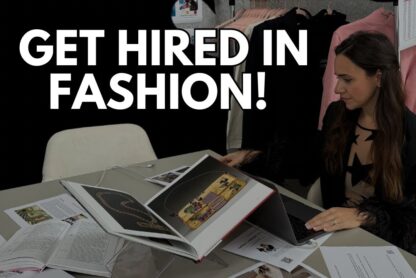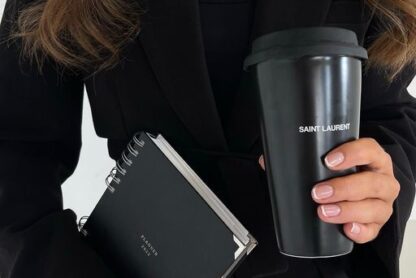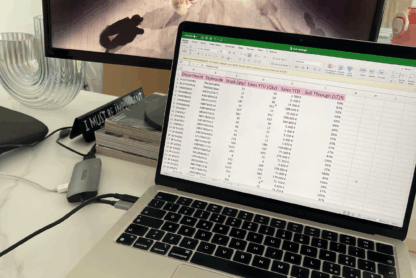Are you a fashion student needing to complete a course project or your fashion portfolio?
Or do you work as (or want to become) a fashion designer, stylist, merchandiser, or event organizer and need to build a mood board for work?
A fashion mood board is a valuable tool for your career in the fashion industry.
In this article, we will explain how professionals use them in fashion, cover the steps of how to build a fashion mood board and show how to use it in your portfolio to land a job or internship in fashion quickly.
How To Build A Fashion Mood Board
What’s a fashion mood board?
A fashion mood board is a collage of images that can include different styles, trends, colors, fabrics, and more.
In the fashion industry, it is used as a source of inspiration and visual aid to facilitate the creative process and define business strategies.

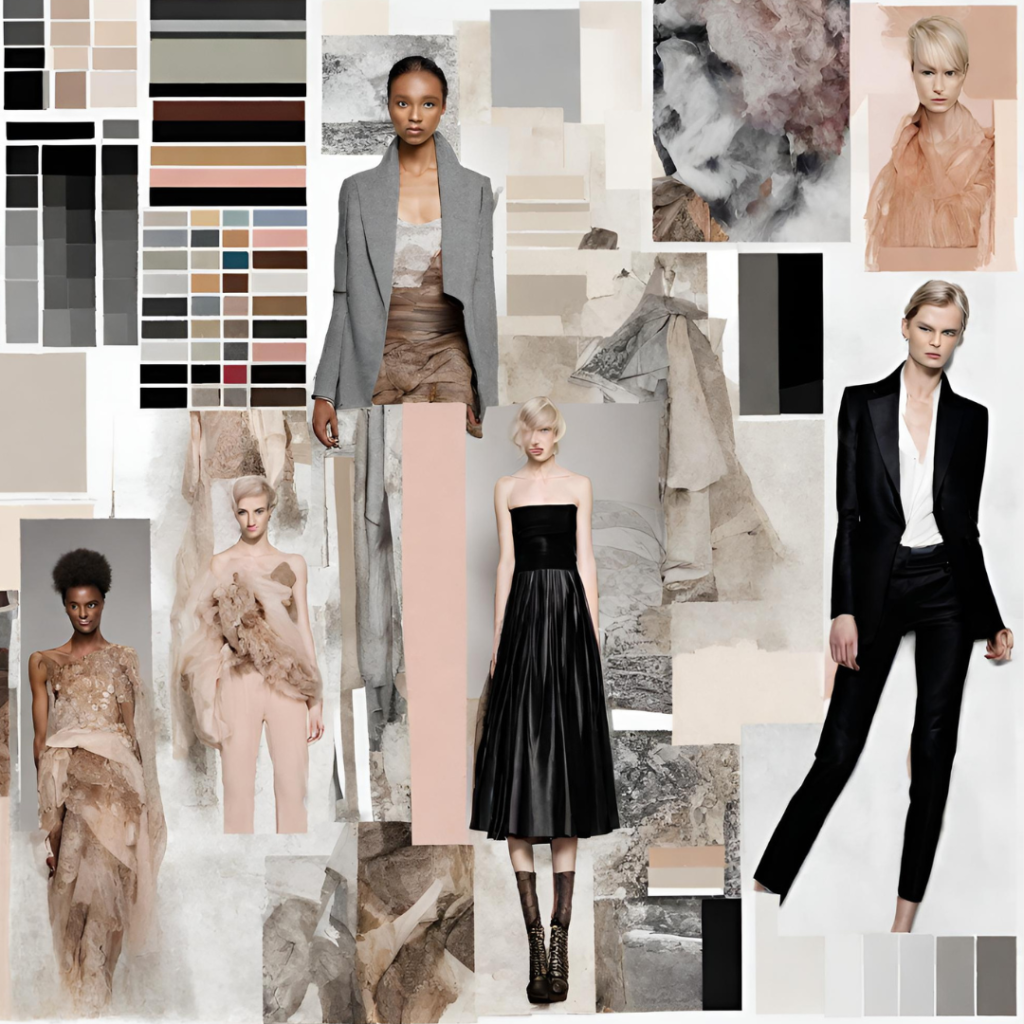
Who uses fashion mood boards in fashion?
Fashion professionals across various departments use mood boards as an indispensable tool to inform and guide their creative processes. Here are some key players in the fashion industry who commonly rely on mood boards.
Fashion Designers
At the heart of the fashion industry, designers use mood boards as a starting point for their creative vision. From haute couture to ready-to-wear collections, designers gather inspiration, explore trends, and develop their design concepts through mood boards. These visual collages serve as a roadmap for translating ideas into tangible garments, guiding everything from fabric selection to silhouette creation.
Stylists
Stylists play a crucial role in shaping the visual narrative of fashion through editorial shoots, advertising campaigns, and red-carpet appearances. Mood boards serve as a blueprint for stylists, helping them conceptualize and communicate their vision to clients, photographers, and hair and makeup artists. By curating images that reflect the desired mood, theme, and aesthetic, stylists ensure cohesive and impactful fashion storytelling.
Fashion photographers
Fashion photographers use mood boards to define the theme and aesthetic of their photoshoots. Finding the right images can be helpful not only in gathering inspiration but also in translating their entire vision for the shoot into a comprehensive mood board.
You might think that only creative roles in fashion use mood boards. But you should know that professionals who work on the business side of the industry also often rely on fashion mood boards.
Merchandisers
Mood boards enable collection merchandisers to analyze current fashion trends and anticipate future consumer preferences. By incorporating trend forecasts, color palettes, fabric swatches, and style references into their mood boards, merchandisers gain insights into the key trends shaping the industry. This trend analysis informs their decision-making process and helps them identify the most relevant trends to incorporate into the collection plan.
Fashion Marketing and Brand Managers
In fashion marketing and branding, creating a strong visual identity is essential for building brand recognition and fostering consumer loyalty. Mood boards serve fashion marketing and brand managers as a creative tool for marketing professionals to develop branding campaigns, visual content, and social media strategies that resonate with their target audience. By distilling brand values and messaging into visual elements, marketers craft compelling narratives that drive engagement and sales.
Trend Forecasters
Trend forecasters start by conducting extensive research into cultural, social, economic, and technological trends that influence consumer behavior. They gather inspiration from a wide range of sources, including art, design, architecture, film, music, and pop culture.
Mood boards serve as a visual repository for their findings, allowing trend forecasters to organize and distill diverse influences into cohesive themes and narratives. Trend forecasters curate images that reflect trending color palettes, patterns, silhouettes, and styling details to create a visual representation of each trend concept.
Mood boards thus facilitate trend analysis and comparison, helping trend forecasters to identify patterns, connections, and overarching themes across different cultural and creative domains.
Event and fashion show organizers/planners
Mood boards serve as a visual brainstorming tool for event planners, fashion PRs, and fashion show organizers to conceptualize themes and event concepts. They create mood boards that capture the desired atmosphere, mood, and aesthetic of the event. This helps establish a cohesive theme that guides all aspects of event planning, from venue selection to decor and ambiance.
Fashion event organizers use mood boards to communicate their vision to vendors and suppliers involved in the event, whether it’s florists, decorators, lighting technicians, or audiovisual specialists. In fashion shows, mood boards inform runway design and model styling decisions. Organizers use mood boards to plan the layout of the runway, including the set design, lighting placement, and seating arrangements.
Steps to build a fashion mood board
1.Define what the mood board will be used for
Before building your mood board, it’s important to clarify your intentions.
- What’s the scope of your mood board?
- Who are you going to share it with?
- Do you need to build it to show it to a client as a stylist?
- Are you building it to develop your collection as a designer?
- Are you a student needing to create it for a specific project or your fashion portfolio?
- Does it need to represent a trend, the mood of a fashion show, or a marketing campaign?
Defining the purpose and scope of your mood board is essential as it serves as the foundational starting point for its creation. Clarifying the purpose and audience of your mood board will inform the content, layout, and overall aesthetic, ensuring it effectively fulfills its intended role as a visual communication tool.
2. Where to find inspiration and images for the fashion mood board?
Inspiration can be found everywhere, from fashion magazines and online platforms to art exhibitions and even walks in nature.
Start collecting images, colors, textures, and patterns that resonate with your style vision. You can find them on Pinterest, Instagram, magazines, photos from fashion shows, etc.
Don’t limit yourself to fashion-related content; draw inspiration from architecture, photography, vintage posters, and beyond. Indeed, fashion professionals always seek ideas from other industries and areas to gather inspiration and incorporate popular trends into fashion.
3. How to build a fashion mood board
Fashion mood boards can be created both digitally and manually, depending on your preference and resources.
Digital platforms like Canva and Adobe Spark offer user-friendly interfaces and a wide range of design tools.
If you prefer a hands-on approach, opt for a physical mood board using a corkboard, foam board, or even a blank wall as your canvas. Gather your selected images, fabric swatches, magazine clippings, and other tactile materials you’ve collected.
4. How to Layout a fashion mood board
Whether your mood board will be digital or physical, thoughtful layout and composition are key to creating an impactful, clear, and organized fashion mood board.
Experiment with different arrangements. Balance is essential, ensure that your mood board is visually dynamic yet cohesive, guiding the viewer’s eye across the composition. Make sure that it reflects the concept you have in your mind.
5. Add Context (quotes, descriptions…)
A fashion mood board is more than just a collection of pretty pictures; it tells a story and provides context for your style inspiration.
Consider adding annotations, captions, or quotes that articulate your vision and the emotions behind your chosen aesthetic. Share insights into why certain images resonate with the project or how you envision incorporating specific elements into your collection, shoot, trend report, or marketing campaign.
Fashion mood board for your portfolio
Fashion mood boards can be a powerful addition to a student or recent graduate’s portfolio when seeking employment in the fashion industry.
I always say to pair your resume and cover letter with a portfolio even when it’s not required because it can serve as a tangible representation of your skills. Showing is better than telling, so I suggest creating a portfolio to increase your prospects of securing a fashion job or internship.
As you have read from this article, a mood board is not only used by fashion designers, stylists, and photographers. It’s also used by merchandisers, marketing and PR managers, event organizers, trend forecasters… So if you aspire to a career in one of these fields, you should build a mood board and add it to your portfolio.
A portfolio will add an extra touch to your application showing recruiters you go beyond standard requirements. In my Break into the Fashion Industry course, I teach how to build a portfolio and I also assign to my students some practical assignments that span from design to styling, buying, marketing, PR, etc. So even if they have zero work experience, they can provide recruiters with a portfolio including relevant projects that show their skills to increase the chances of landing an internship or job in fashion.
How to use mood boards to create a fashion portfolio
The goal of a mood board in your fashion portfolio is to complement the entire project, showing your research and concept part. Incorporate mood boards alongside finished design/marketing/buying projects to provide a holistic view of your design/marketing process.
Show how your initial mood board concepts translate into tangible fashion designs, whether it’s through sketches, illustrations, or garment prototypes. This demonstrates your ability to execute your design vision from concept to completion.
In addition, a mood board shows proficiency in visual communication.
Align the mood board with a specific position
Customize your mood boards to align with the specific job role or company you’re applying to. Tailoring your mood boards demonstrates your ability to adapt to different design aesthetics or roles and meet the needs of the employer.
If you’re applying for a design position at a streetwear brand, for example, include mood boards that reflect urban street style influences and contemporary trends.
If you are applying for an event internship or PR internship, your mood board might be the one that represents the fashion event/fashion show concept.
You could include in your fashion portfolio a variety of mood boards that showcase your versatility as a designer, aspiring stylist, photographer, and so on. This will demonstrate your ability to work across different themes, styles, and market segments. For example, for fashion designers, whether you’re skilled in creating minimalist designs, bohemian looks, or avant-garde fashion, showcase a range of mood boards that highlight your diverse design capabilities.
Add context
As already explained in the paragraph above, you should accompany your mood boards with descriptive captions or annotations that provide context and narrative. Explain the inspiration behind each mood board, the design elements it incorporates, and how it relates to your overall design philosophy. Providing insightful commentary enhances the storytelling aspect of your portfolio and allows employers to understand your creative vision.
Pay attention to the visual appeal
Ensure that your mood boards are presented in a professional and polished manner. Use high-quality images, thoughtful layouts, and cohesive color schemes to create visually impactful mood boards. Pay attention to details such as typography, spacing, and alignment to maintain a professional aesthetic throughout your portfolio.
We have learned today that many roles use fashion mood boards for different purposes and that sending a mood board as part of your portfolio can be an easy way to showcase your skills to fashion companies even if you don’t have any experience.
Need help building your fashion portfolio and applying for jobs/internships in fashion?
Enroll in my online course Break into the Fashion Industry or start with my free webinar.
